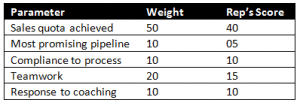When ASC 606/IFRS 15 was introduced, it not only shook the accounting world at that time but it continues to have reverberations across entire organizations even today. Companies reporting under the US GAAP or the IFRS accounting standards have had to go to great lengths to adapt their internal processes, with one area proving particularly challenging: commission expense accounting. Years later, challenges still persist for organizations trying to maintain compliance with these standards. Here, we outline 5 specific actions your organization can take to make compliance easier.

Aggregating sales commission data and identifying eligible contracts with customers are just some of the challenges that CFOs, accounting/finance specialists, and even sales operations professionals have struggled with in this area. And many are still struggling today.
What to do? To identify the right solution, we need to get a good understanding of the problem first. Let’s start with a brief overview.
ASC 606 / IFRS 15 overview: purpose, impact, and risks
In 2014, diverging areas of the US and international revenue recognition standards prompted the FASB and IASB to amend and converge their guidelines. The new ASC 606/IFRS 15 went into effect in 2018 for public companies, and 2019 for private ones. Their aim is to reduce financial reporting inconsistencies across industries and globally. This, in turn, ensures more accurate financial performance assessments of companies within and across industries.
Under ASC 606 / IFRS 15, organizations that pay commissions on revenue generated from contracts – other than insurance and lease contracts, and financial instruments – need to capitalize the incremental costs of obtaining a contract at inception, if the contract’s duration is longer than one year.
In other words, the associated commissions paid to salespeople can no longer be treated as a one-time expense. Instead, they must be treated as an asset that gets amortized over the duration of the contract. Importantly, the duration of amortization will vary depending on whether the contract is reasonably expected to be renewed.
Now, if a company fails to correctly recognize sales commission expenses under the amended guidelines, it may need to restate its earnings. This increases the risk that investors or customers will doubt the credibility of the company’s financial reports.
Likewise, at an operational level, if a company lacks visibility into contracts and associated sales commissions, it may not be able to systematically identify those that are eligible for amortization. This leads to inefficient and inaccurate accounting practices, making it difficult to comply with the new regulations.
Compliance is a shared responsibility
To mitigate these risks, multiple groups in the organization need to come together and understand how they can best support each other’s work under these regulations. From Finance to Sales, various roles need to join forces to ensure a seamless commission expense recognition management process. For example:
Compensation administrators
- Must be able to identify contracts that span a period of more than one year.
- Equally important, they must be able to differentiate between commissions paid to sales reps as opposed to supervisors, as they may need to be treated differently.
Sales Operations managers
- Need to ensure access to detailed revenue and commission data at the customer, contract, and product level.
- Above all, they need to ensure that compensation plans continue to motivate the right sales behaviors, as opposed to changing plans to make accounting easier.
Accounting / Finance managers
- Must be able to trace amortized expenses back to contracts and track changes in assets over time.
- In addition, they should ensure an auditable system of record.
CFOs
- Must ensure an accurate accounting of commissions expenses, and a cost-effective auditing process.
The real compliance problem
Coordinating roles and responsibilities under these new regulations is difficult, but manageable. The real problem that many companies have not yet solved is equipping everyone involved with the right tools to streamline the process. As a result, they still struggle with:
- Failure to correctly account for contracts and associated sales commissions;
- Lack of visibility into contracts and sales commissions that are eligible for amortization;
- Reliance on spreadsheets and manual processes to track sales commissions, which lead to errors and miscalculations.
5 key actions to take NOW to ensure a seamless ASC 606 / IFRS 15 compliance process
So ASC 606 / IFRS 15 compliance has proven to be a bear for many companies. But it shouldn’t be. Here are 5 key actions organizations can take to overcome compliance hurdles:
- Encourage solid partnerships between sales operations and accounting/finance teams and clearly communicate about everyone’s role in this process.
- Assess compensation, accounting and auditing practices, and internal controls, and update necessary systems and processes.
- Evaluate the ability of your systems to capture granular data and report amortized commissions in accordance with the new regulations.
- Determine the amortization method and analyze existing contracts to estimate their duration if they’ll potentially be renewed for an anticipated amount of time.
- Choose a business process automation solution that automates the commission expense recognition process, effectively addresses governance and compliance challenges, and ensures proper auditing going forward.
Learn how the Optymyze solution for Commission Expense Recognition (ASC 606 / IFRS 15) automates key business processes to ensure compliance with accounting standards.











Recent Comments